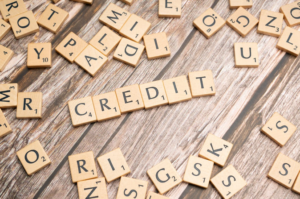Top Tips for Building a Diversified Digital Asset Portfolio
- by Benjamin Garza
- 8 months ago
- 0 comments

In the fast-paced and ever-evolving world of digital assets, savvy investors know that playing it bright means more than just picking a few popular cryptocurrencies and hoping for the best. Building a well-diversified digital asset portfolio is the key to navigating the ups and downs of this exciting market. Whether you’re a seasoned trader or just dipping your toes into the crypto waters, having a variety of digital assets can help you minimize risks and maximize returns. Ready to dive into the top tips for creating a balanced and robust digital asset portfolio? Let’s get started. For a deeper dive into this topic, you can review this crypto airdrop blog and explore the latest trends and strategies to help you navigate the crypto landscape.
Mix Different Types of Digital Assets
 The first step to diversification is mixing different types of digital assets. While cryptocurrencies like Bitcoin and Ethereum are well-known, the digital asset space offers various other opportunities, including utility, security, stablecoins, and non-fungible (NFTs) tokens. You can spread your investment risk by including a mix of these asset types. For instance, while Bitcoin might provide long-term value storage, utility tokens may offer access to specific platforms, and stablecoins can hedge against volatility. Diversifying across different digital assets can protect your portfolio from market fluctuations affecting a single asset type.
The first step to diversification is mixing different types of digital assets. While cryptocurrencies like Bitcoin and Ethereum are well-known, the digital asset space offers various other opportunities, including utility, security, stablecoins, and non-fungible (NFTs) tokens. You can spread your investment risk by including a mix of these asset types. For instance, while Bitcoin might provide long-term value storage, utility tokens may offer access to specific platforms, and stablecoins can hedge against volatility. Diversifying across different digital assets can protect your portfolio from market fluctuations affecting a single asset type.
Invest in Different Sectors and Technologies
The digital asset space is not limited to currencies; it spans various sectors and technologies. The opportunities are vast from decentralized finance (DeFi) platforms and blockchain-based supply chains to digital identity verification and decentralized applications (dApps). Investing across different sectors can further diversify your risk. For example, if you invest in both a DeFi platform token and a blockchain infrastructure token, poor performance in the DeFi sector won’t necessarily mean losses across your entire portfolio. Consider emerging trends and technologies within the digital asset space to capture potential growth.
Allocate by Market Capitalization
Market capitalization, the total value of a cryptocurrency, can serve as a helpful guide when allocating assets. Large-cap digital assets like Bitcoin and Ethereum tend to be more stable than smaller-cap altcoins, which might offer higher growth potential but come with increased volatility. A diversified portfolio might include a mix of large-cap, mid-cap, and small-cap digital assets, balancing stability with growth potential. Allocating by market cap helps manage risk, as large-cap assets can provide a foundation of stability, while mid and small-cap assets can drive portfolio growth.
Regularly Rebalance Your Portfolio
The digital asset market is highly dynamic, constantly changing prices and market conditions. Regularly rebalancing your portfolio is crucial to maintaining your desired level of diversification. Rebalancing involves periodically adjusting your portfolio to align with your investment goals and risk tolerance. For instance, if one asset’s value significantly increases, it might disproportionately dominate your portfolio, increasing risk. By rebalancing, you can sell some of the appreciated assets and reinvest in underrepresented ones, ensuring a balanced approach that adheres to your strategy.
Stay Informed and Adapt to Market Trends
Staying informed about the latest market trends and news is vital for successful diversification. Technological advancements, regulatory changes, and global economic factors influence the digital asset market. By keeping up-to-date with industry news, you can identify new investment opportunities and adjust your portfolio to reflect current conditions. Subscribing to reputable cryptocurrency news sources, following expert analysis, and participating in community forums can provide valuable insights. Being proactive and adaptable to market changes can enhance your portfolio’s resilience.
Building a diversified digital asset portfolio is a strategic approach to managing risk and maximizing returns in the volatile world of digital investments. By mixing different types of digital assets, investing across sectors, allocating by market capitalization, regularly rebalancing, and staying informed about market trends, you can create a robust portfolio that withstands market fluctuations. Remember, the key to successful diversification is continuous learning and adapting your strategy to the ever-evolving digital asset landscape.



